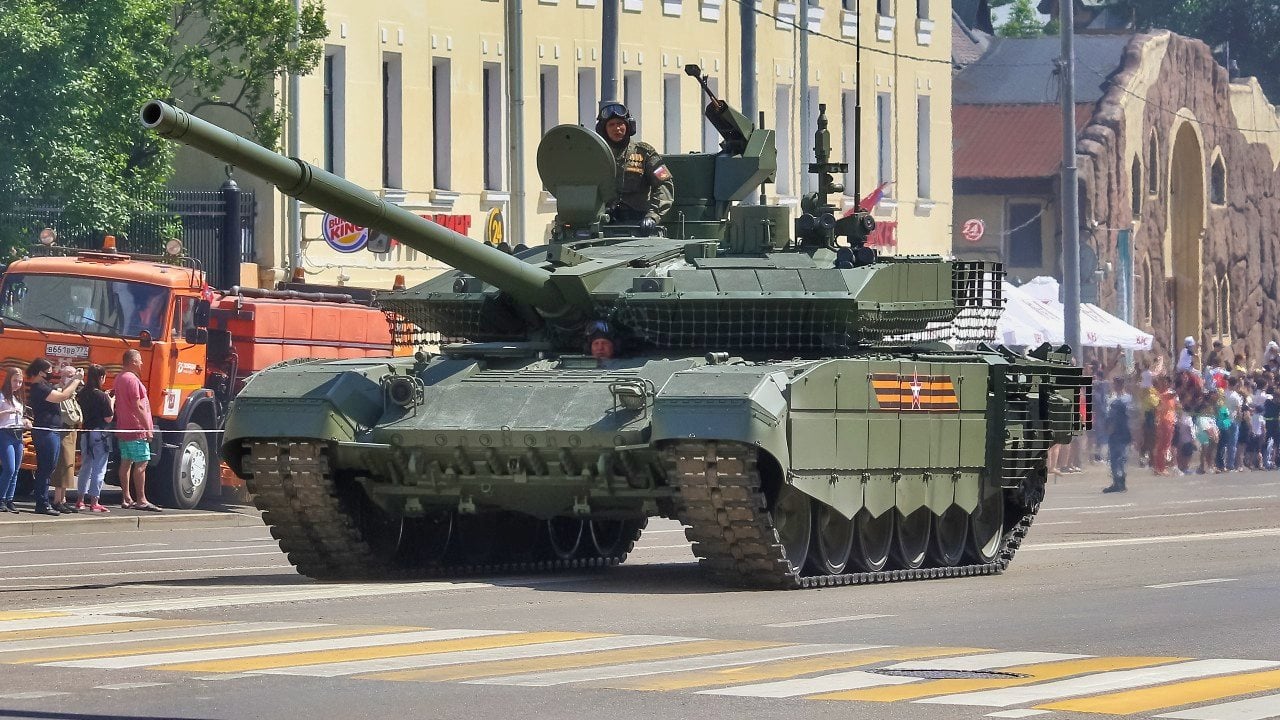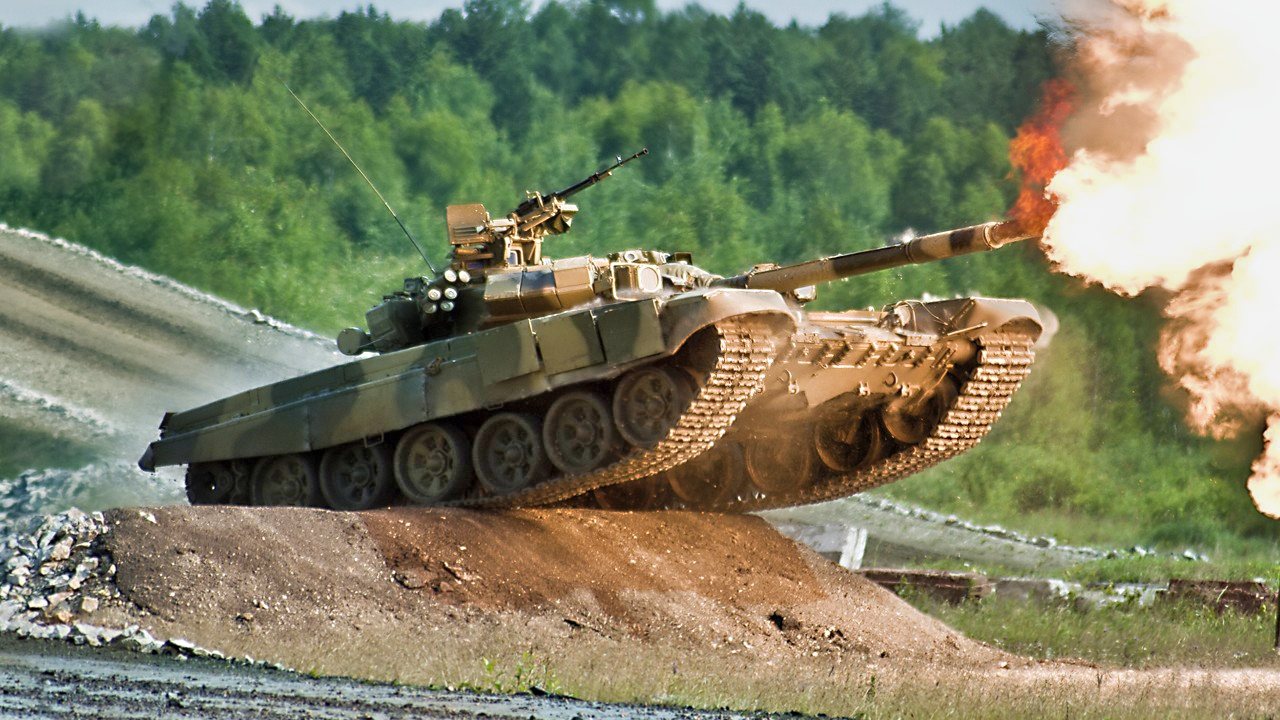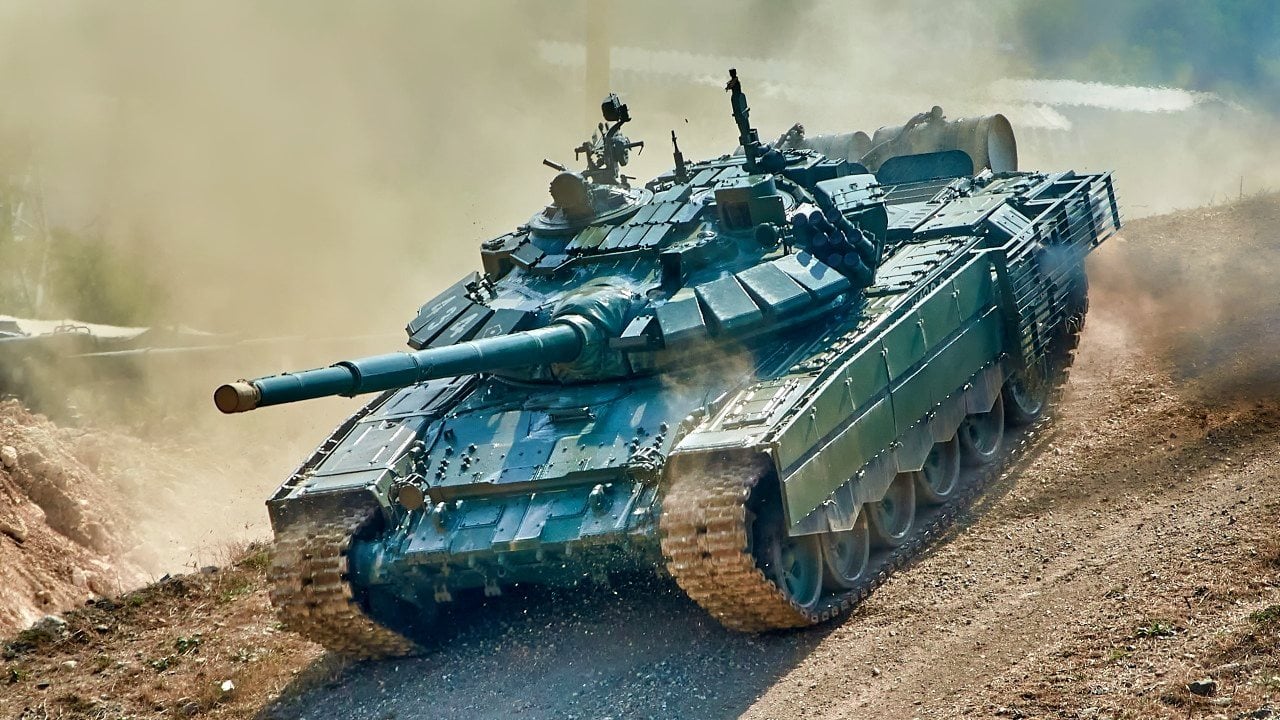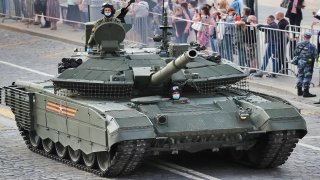Russia's T-90 Main Battle Tank Nightmare
Main battle tanks (MBTs) have not fared well in the ongoing conflict in Ukraine, particularly Soviet-era tanks used by Russia. Moscow has reportedly lost around 3,000 MBTs, including many T-90 tanks
Summary: Main battle tanks (MBTs) have not fared well in the ongoing conflict in Ukraine, particularly Soviet-era tanks used by Russia. Moscow has reportedly lost around 3,000 MBTs, including many T-90 tanks.

-Despite being designed as a superior replacement for older tanks, the T-90s, including the T-90M variant, have been vulnerable to modern anti-tank weaponry and drones.
-Recent footage shows a T-90 being destroyed by Ukrainian attack drones, highlighting its susceptibility.
T-90 Tanks: The Unseen Casualties of Ukraine's Battlefield
Main battle tanks have not fared well in the ongoing Russian invasion of Ukraine.
While both Kyiv and Moscow have suffered from severe tank losses since the war commenced back in February 2022, the Soviet-era armored vehicles deployed by the Kremlin have been particularly decimated.
The International Institute for Strategic Studies has recently estimated that Moscow has likely lost roughly 3,000 MBTs over the last 27 months. This number has been corroborated by the open-source intelligence tracker Oryx, which puts the number at just under 2,850.
Last week, video footage depicting the destruction of a T-90 MBT circulated widely on social media. According to a post on Telegram, several Ukrainian-launched attack drones within Kyiv’s 47th Separate Mechanized Brigade were responsible for the barrage, which hit the top of the tank’s turret and damaged part of its guidance system. While the video has yet to be verified, the T-90 MBT is undoubtedly vulnerable to drone attacks.
Introducing the T-90 MBT:
During the Cold War, the Soviets desired a replacement tank for its T-64, T-72 and T-80 MBTs that could better contend with the U.S. and NATO’s own fleets.
Based on the T-80’s poor performance in the First Chechen War, Soviet officials wanted to phase out the tank series altogether to make room for a newer platform.
The resulting T-90 tank was designed with the T-80’s 1A45T Irtysh fire control system at the Uralvagonzavod factory. Over the years, several T-90 variants emerged, all equipped with enhancements in order for the tank to retain an edge over its competitors.
While the T-90 appears very similar to its predecessors, it hosts several upgrades which make it a superior fighting machine.

Specifically, the T-90’s Shtora-1 countermeasures suits provide a laser warning system, automatic smoke dispensers and infrared dazzlers. The latest T-90M variant also sports a newer gun which hosts superior range.
Like all other currently deployed Russian tanks, the T-90M uses 125mm ammunition and can fire either HE, APFSDS or HE-FRAG rounds.
Operational history
In the late 1990’s, several T-90s were deployed to the frontlines of the Chechnyan War. Although the Moscow Defense Brief claimed that one of these tanks was able to survive and continue fighting after being struck by seven RPGs, the majority of the T-90’s deployed were struck or destroyed in the conflict.
However, a T-90 was able to survive a direct frontal hit from an American-made anti-tank missile years later amidst the Syrian Civil War.
Since the invasion of Ukraine commenced, Russia’s fleet of T-90s has also failed to perform well. In fact, Oryx reported last month that Moscow had lost at least 127 of these tanks alone.

Ukraine has effectively used its stockpiles of Western-made anti-tank weaponry and domestically produced drones to curtail Moscow’s advances on the frontlines.
As the war wages on, additional T-90s will likely suffer a similar fate.
About the Author: Maya Carlin
Maya Carlin, National Security Writer with The National Interest, is an analyst with the Center for Security Policy and a former Anna Sobol Levy Fellow at IDC Herzliya in Israel. She has by-lines in many publications, including The National Interest, Jerusalem Post, and Times of Israel. You can follow her on Twitter: @MayaCarlin.
All images are from Shutterstock.


